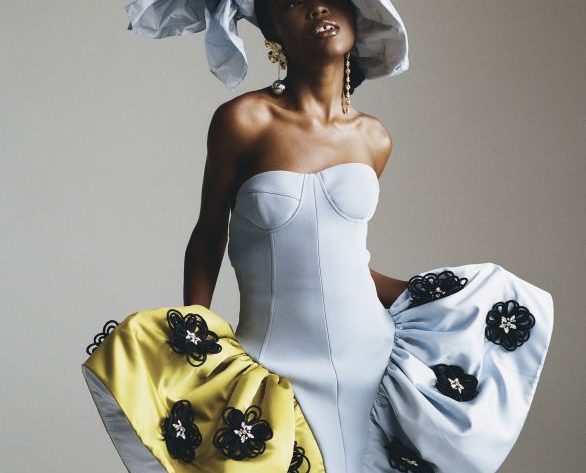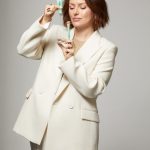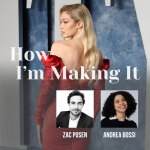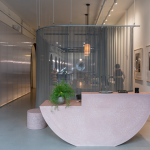Charles Harbison found himself in the clutches of a beast known all too well in the fashion industry: burnout.
He had studied architecture at Parsons and designed home textiles before switching over to womenswear, first at Michael Kors then at his namesake label, Harbison, which he launched in 2013 after making some samples that “ended up in the hands of wonderful people who loved what I did,” he tells Fashionista. The brand’s rapid success felt like somewhat of a “fluke,” he says — certainly not something he planned for: He dressed the likes of Michelle Obama and Beyoncé, and became known for his bold colors, classic silhouettes, use of deadstock materials and poetry-inspired detailing.
Hoping to maintain this momentum, the designer poured all of himself into the brand, to his own demise.
“As a designer-entrepreneur, you’re not just building and directing and leading a business, but you are the business. I’m the first raw material here,” he says. “In a small amount of time — two years tops — I was expended. I had only been focusing on output, and hadn’t found key sources to offer me input.”
Harbison shuttered the brand in 2016. It wasn’t just because of the workload: He was also facing a trifecta of heartbreak — grieving his grandmother “who meant the world” to him, mourning a partner he thought was the love of his life, facing the exit of a key investor who he alleges to have been “quite fraudulent.” Closing what was once his channel for creativity only piled onto that sense of loss.
“I felt like I was left with nothing. I say that genuinely, because I had also sacrificed myself in the process,” he says. “I was really faced with the decision: Do I throw my energy into saving other things, or do I throw it into saving myself?”
Making this choice felt like one of the first times he prioritized himself.
“When I decided to save my life and move to L.A., I didn’t feel like I was sacrificing my dreams, because it was like, ‘You know what? You’ve already done more than you could have imagined. Now, you’re going to do the thing that, at the time, felt like what my grandmother would’ve wanted,” he says, “and that was for me to be okay.”
Photo: Courtesy of Harbison Studio
Leaving New York City was an essential first step for the self-identifying country boy’s forthcoming journey. Going westward was an opportunity to explore a new place (with much more space, he jokes) and get to know himself again. He reconnected with distant-yet-familiar parts of himself, like his love for nature. He found himself on countless walks, with the beaches of Malibu, trails at Temescal and the desert around Pioneertown becoming places for solace.
“Nature, the earth… it’s my first playground and my first place of healing,” he explains. “L.A. offered me the opportunity to have that and also to keep working. I could still design clothes here, albeit incognito.”
During this time, he worked for other fashion brands, like Cult Gaia, Ungaro and Nicholas. Within five years, he’d open up his own brand again, this time under the refreshed moniker Harbison Studio, in 2022 — but that was never part of the plan. He was called back to it through a string of cosmic events (fitting for the designer who consistently finds inspiration in the stars and mythology).
“If I had been thinking about, ‘What does another iteration of Harbison look like in the future?,’ that would’ve been a point of obsession that would’ve deviated my attention away from me and my wellness,” he says.
As Harbison retells it, celebrity stylist Jason Bolden called him in Feb. 2020, before the pandemic. He and his husband, Adair Curtis, were working on the TV show “Styling Hollywood,” and wanted Harbison to come on and create a gown for Ava DuVernay.
“I hadn’t done any work under my own name for a big client in years,” Harbison explains. “I was quite nervous about it, and it went amazingly well. And of course it went well, because I was in a safe space doing it.”
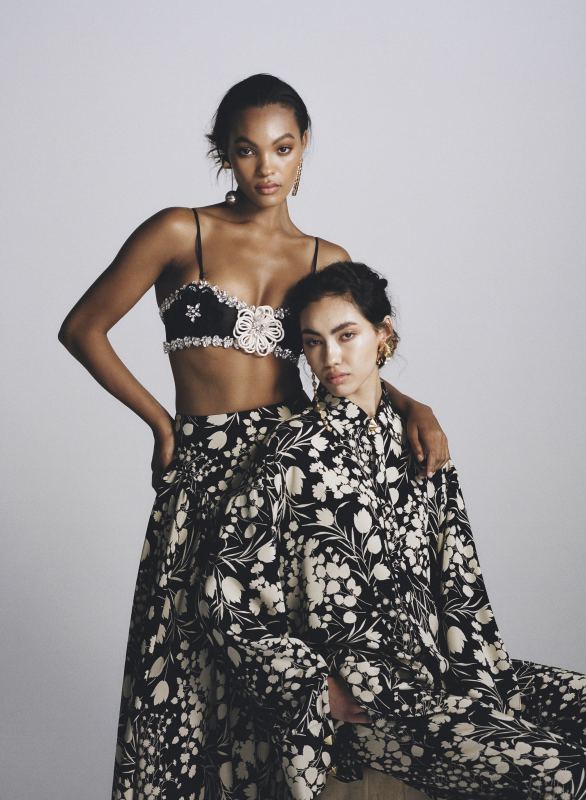
Photo: Courtesy of Harbison Studio
Later that year, an opportunity with Banana Republic came and ignited the flame. The mass retailer hosted a competition with Harlem’s Fashion Row, looking to collaborate with a designer navigating sustainable fashion, diversity and inclusivity. Harbison won.
Harbison for Banana Republic debuted in September 2021. That became a point of no return.
“It sold out and was incredibly well-received, largely by women who didn’t feel centered in fashion and who’d seen me dress Ava on ‘Styling Hollywood,'” he says. All of it “came quite accidentally, which is another thing that gives me confidence… when I feel like the universe genuinely conspired to make something happen that isn’t fully in my hands.”
He soon realized that reopening the label was not only something he wanted to do, but something people were beckoning him to do. Harbison was willing to take this “gamble” on himself because he was going to do it in a different way than before.
At Harbison Studio, some things remain the same, such as the core philosophy and design principles rooted in deadstock materials, waste consciousness and inclusivity. Poetry is still a constant source of inspiration for the designer, whether it’s mythic figures like Hemera or Nyx or his favorite quote from Edgar Allen Poe. But now, Harbison says, optimism runs through the brand. It’s a reflection of one of the biggest lessons born out of his journey and renaissance.
“When things are darkest, faith and optimism are oftentimes the only glimmer,” he argues. “It’s like you can’t reach it, but you keep trying. It draws you in, and it draws you forward. It ends up drawing you through difficulty. I was raised by people who had every reason to not be, but who were overwhelmingly optimistic.”

Photo: Gregory Shamus/Getty Images
Harbison Studio’s return has already had its fair share of high-profile moments, from Jodie Turner-Smith at the 2022 Venice Film Festival to Chlöe Bailey at Essence‘s 2023 Black Women in Hollywood Awards to Sheryl Lee Ralph at the 2023 Super Bowl. With this second coming, though, the designer’s set new boundaries for himself.
“Before it felt like I had very little choice and very little agency in my own business — and that’s nobody’s fault, it’s just what happened,” he says. “Now, I’m older and clearer about myself. Clearer about my yeses, my no’s and also my maybe’s. It has helped me organize in a way where there are limits to my self-sacrifice. I don’t want to be a tragic artist designer. I like living in this process, with my clients. I don’t have any desire to expend myself like I did before.”
When it comes to the clothes, Harbison’s original design language is still present: By incorporating vintage elements and deadstock, the collection transfuses beauty from the past into the present. Bright colors still beam from his satins, crepes and vintage diamanté buttons. Harbison likens his brand’s world to “Alicia in Wonderland,” with how it can transport whoever wears its pieces from a “void of cynicism” to a fantasy.
“I love a dreamy, otherworldly existence because we contend with some nasty shit day in and day out,” he adds.
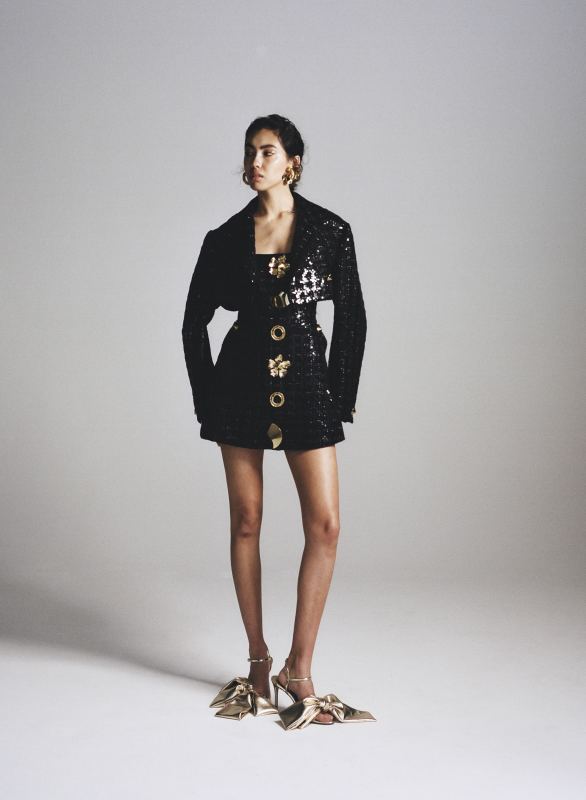
Photo: Courtesy of Harbison Studio
Harbison hopes his garments, which range in size from 0 to 22, inspire confidence: “I want your waist to look snatched, your titties to look perky, your booty to look round and a giant smile on your face; for you to glow in color, walking into the world being the absolute best version of yourself.”
Knowing firsthand what burnout can look like for designers, Harbison wants to be an example for people that want to prioritize their wellbeing without losing their careers.
“There are a lot of great designers that have taken on that huge task of presenting themselves and their work in a really authentic, vulnerable way to the industry and to the market. It can feel like you get one shot at it, and for a myriad of reasons, those people only got one shot,” Harbison says. “What I’m so grateful for is that it feels like… I have another chance.”
“You don’t have to take on more than is healthy for you,” he continues. “You can go away, preserve, fortify yourself and come back. You can do that many times over, and there’s value to that… As I talk about environmental sustainability, I’m not leaving my personal sustainability or my team’s off the table.”
Clothes aren’t a necessity in the same way that food, water and shelter are, but they fulfill a psychological need. They offer an opportunity to bring your inner self outward to be understood by others, whether that be through a tailored suit or a bright gown. When Harbison was called back by his supporters, they reminded him of the force he wields — and they helped him realize he was ready to try again.
Please note: Occasionally, we use affiliate links on our site. In no way does this affect our editorial decision-making.
Never miss the latest fashion industry news. Sign up for the Fashionista daily newsletter.
